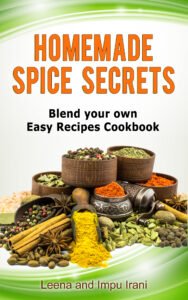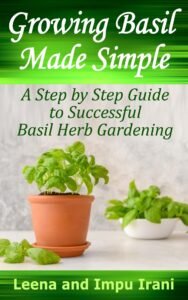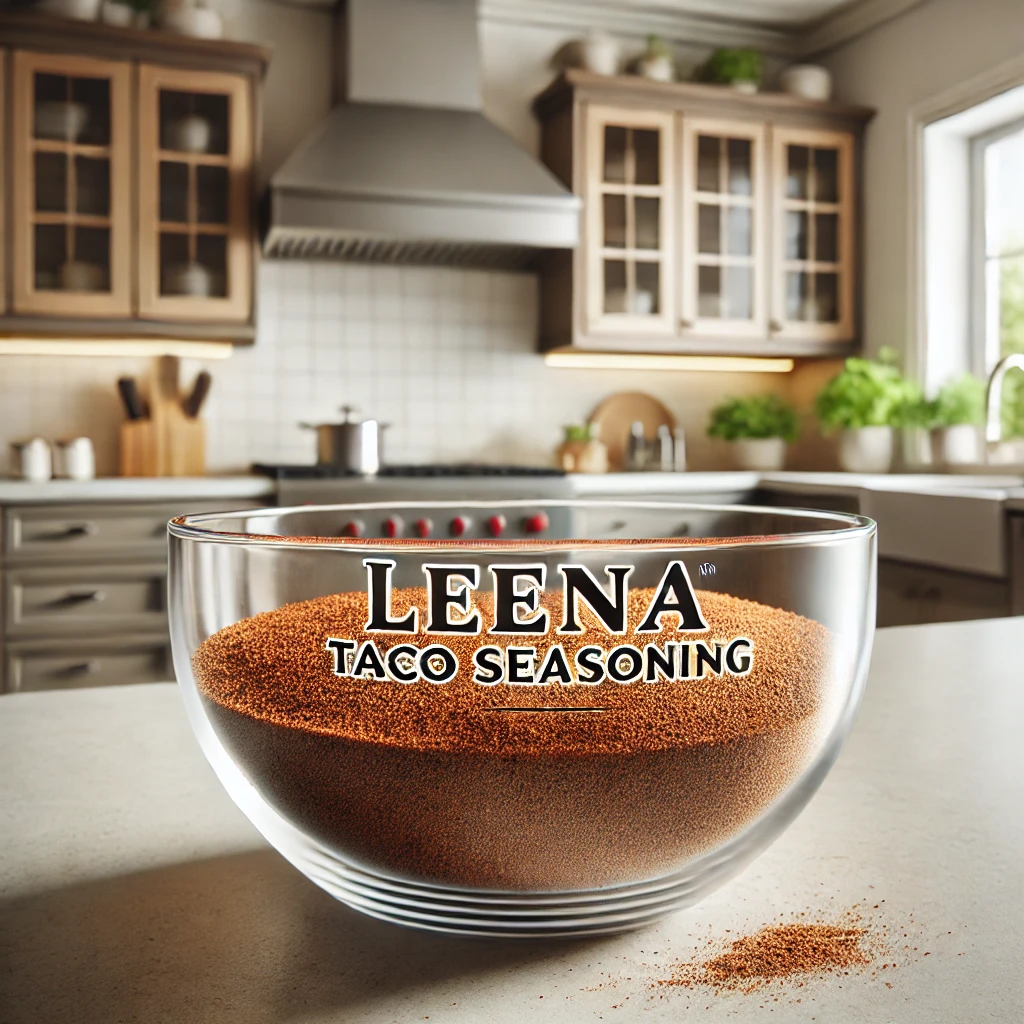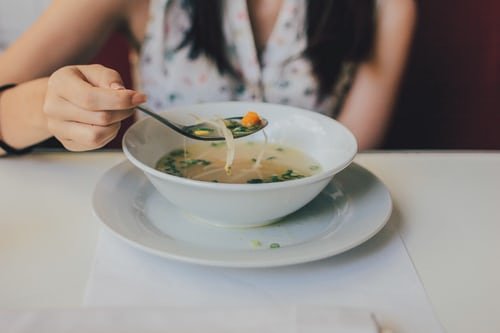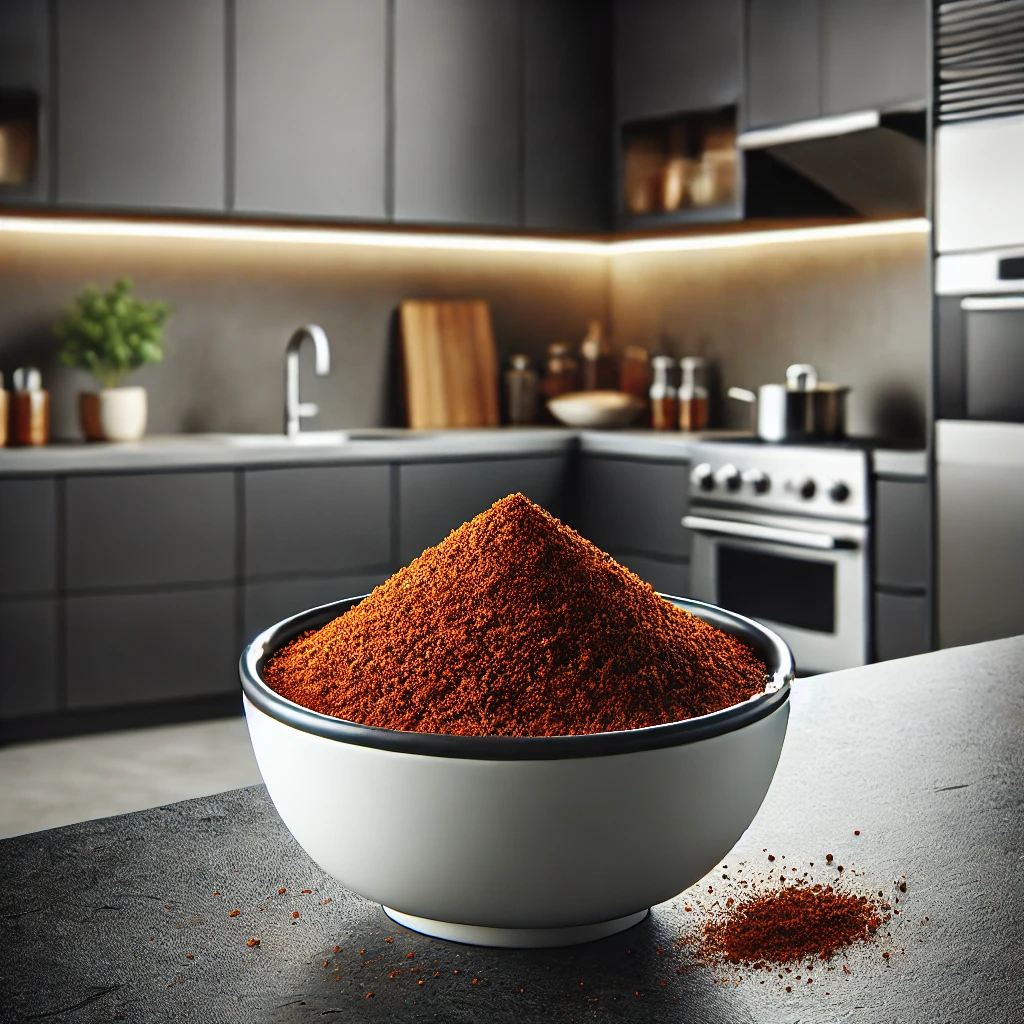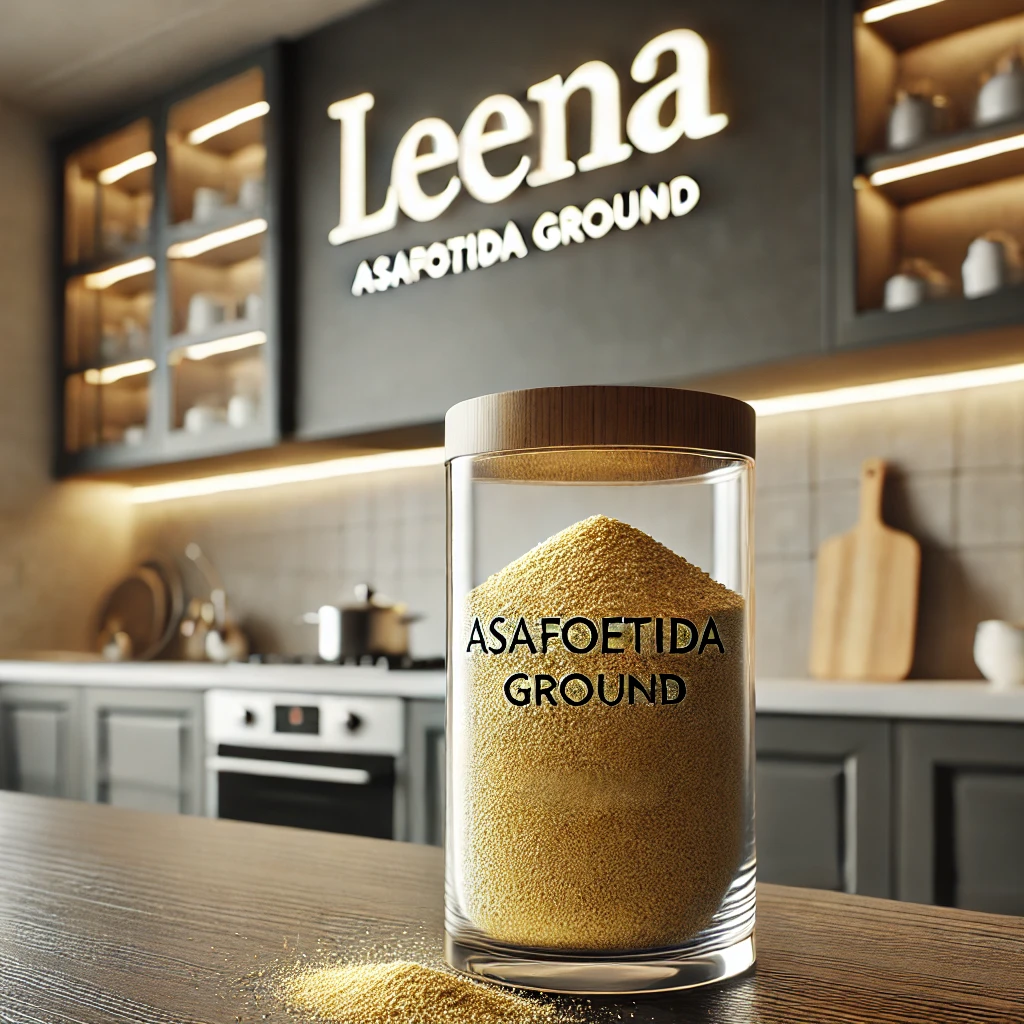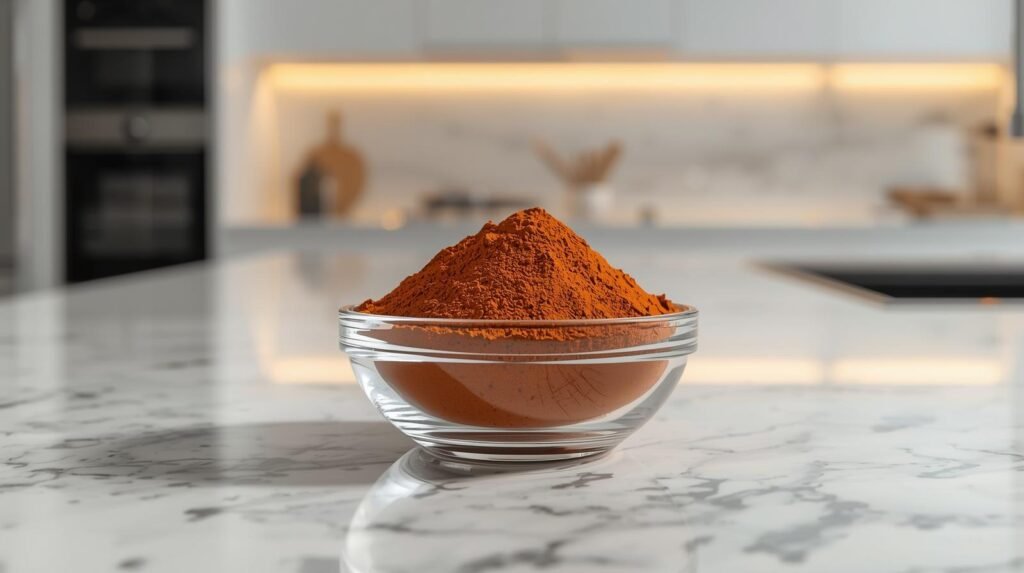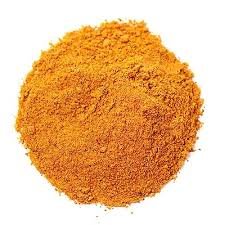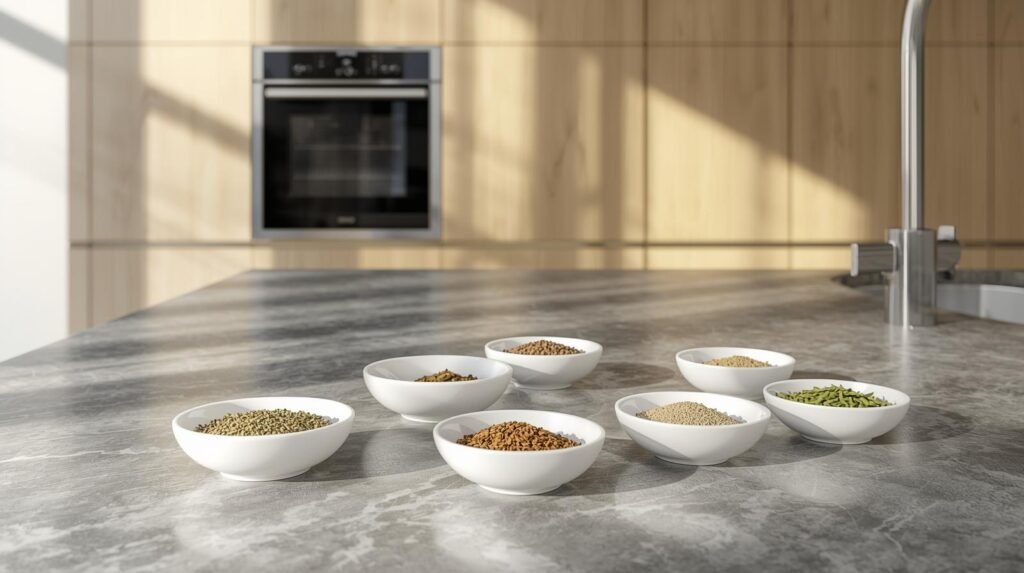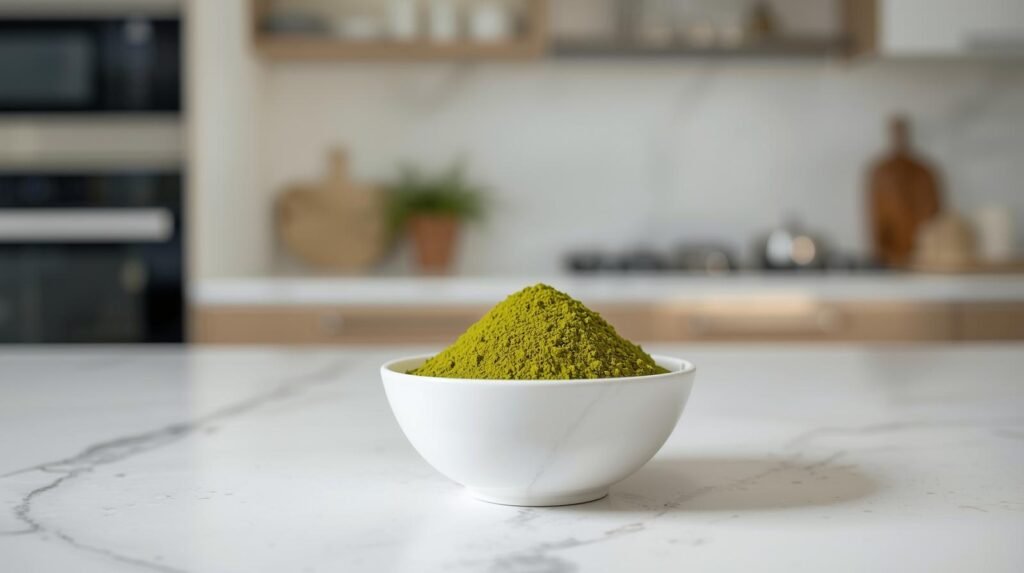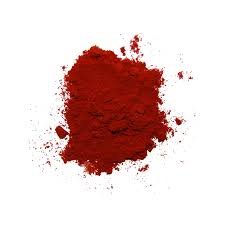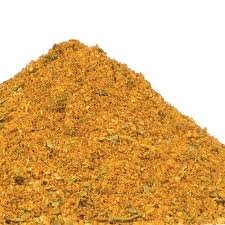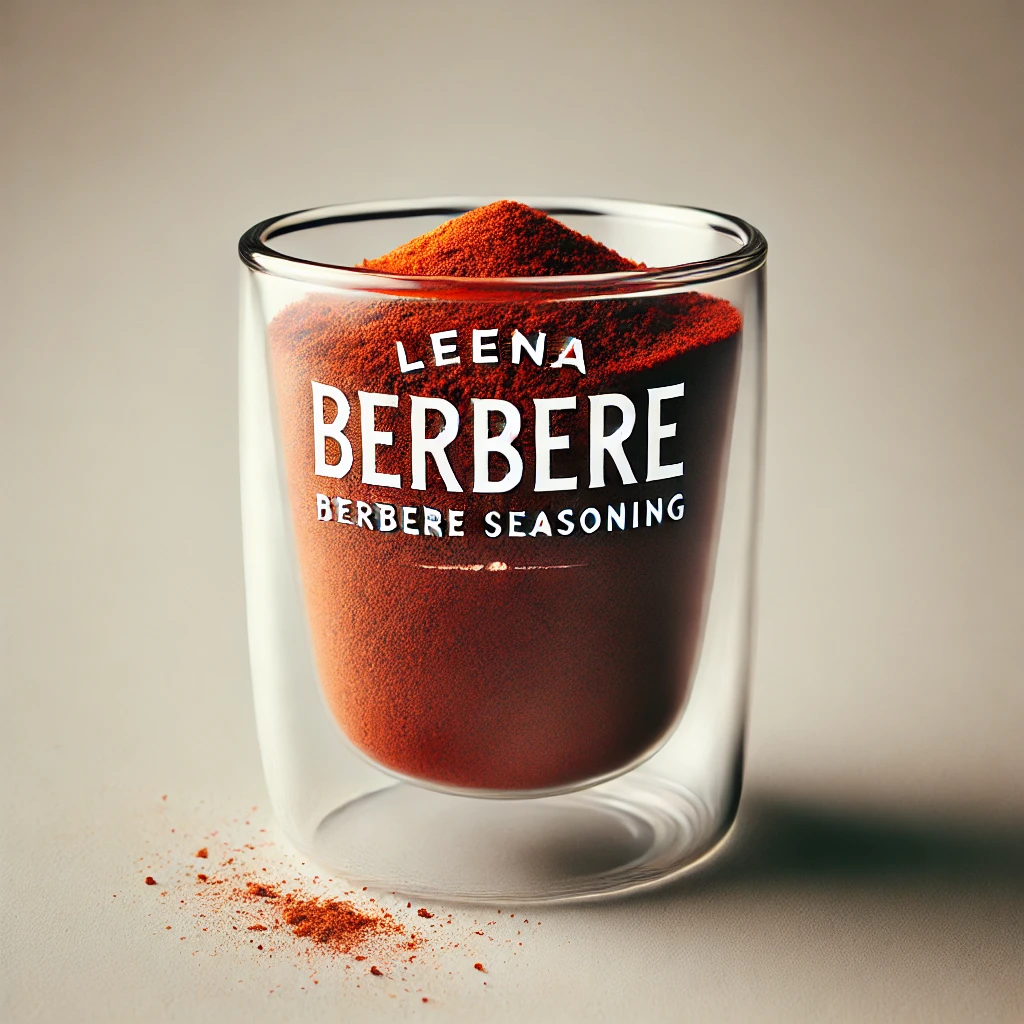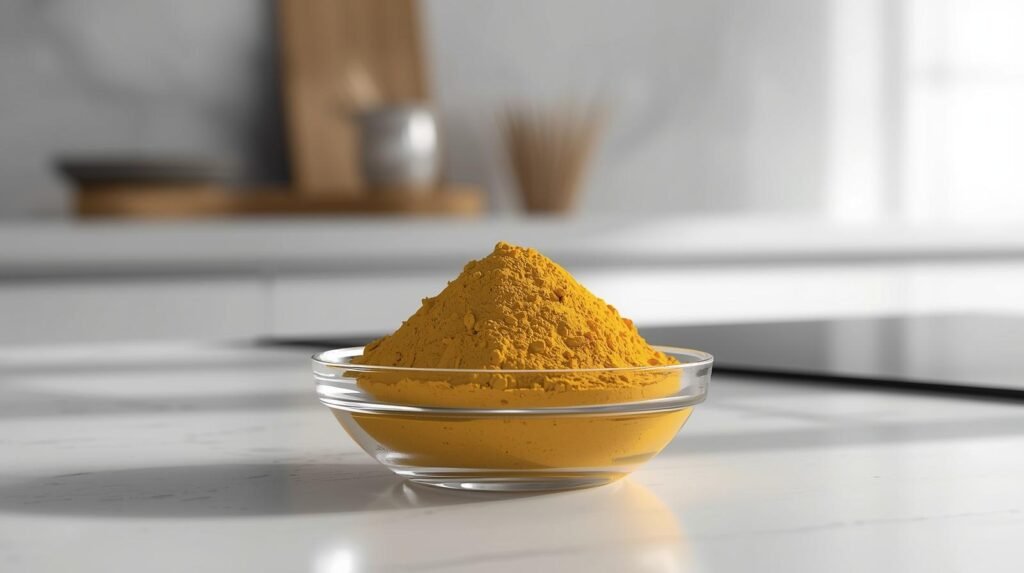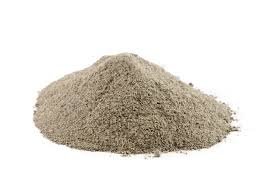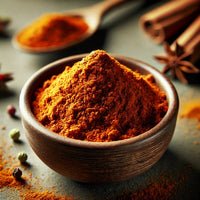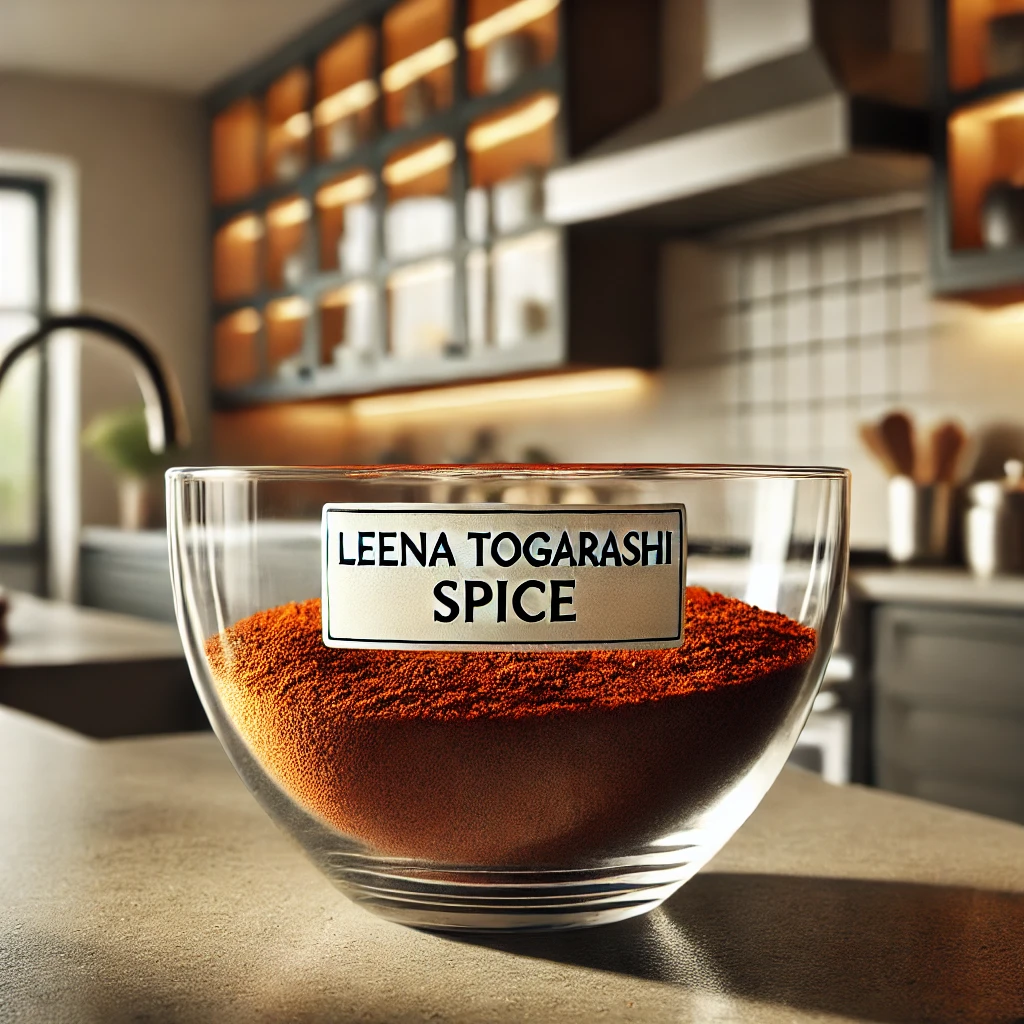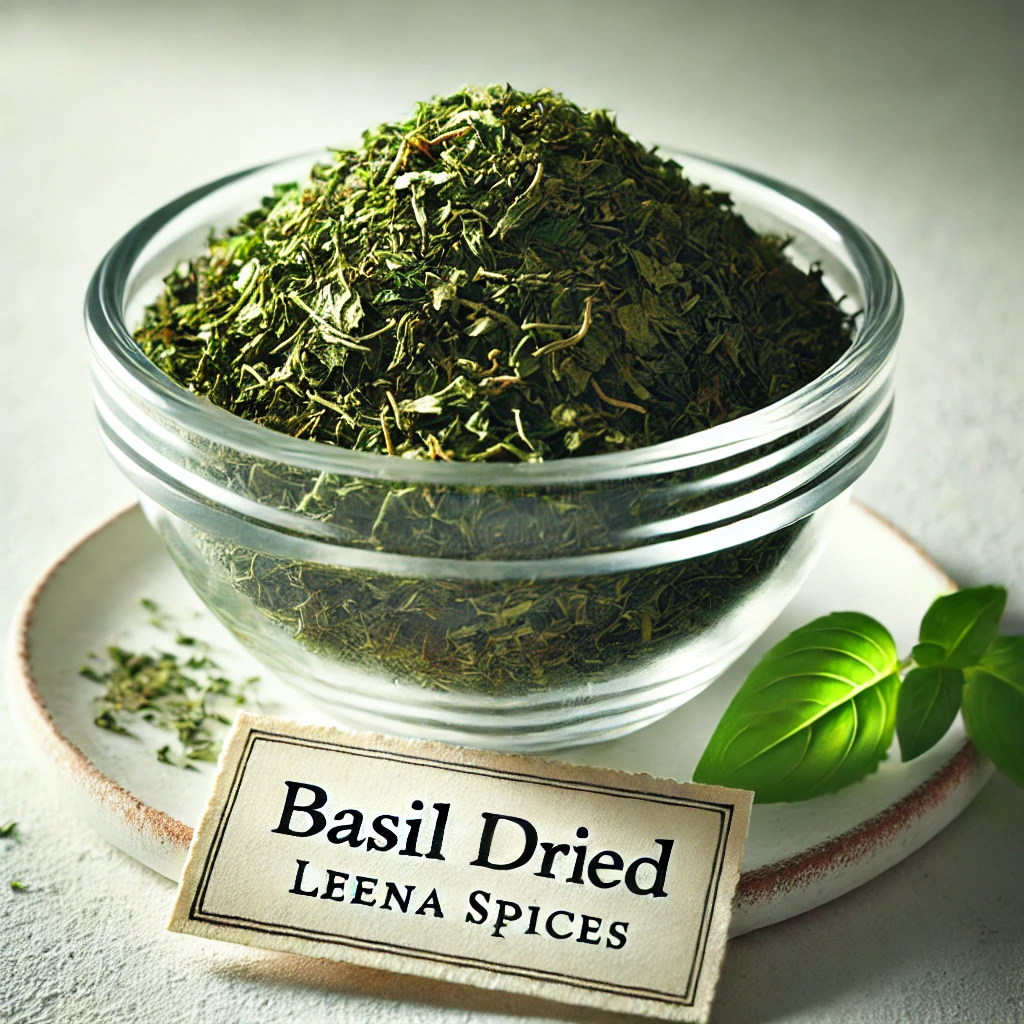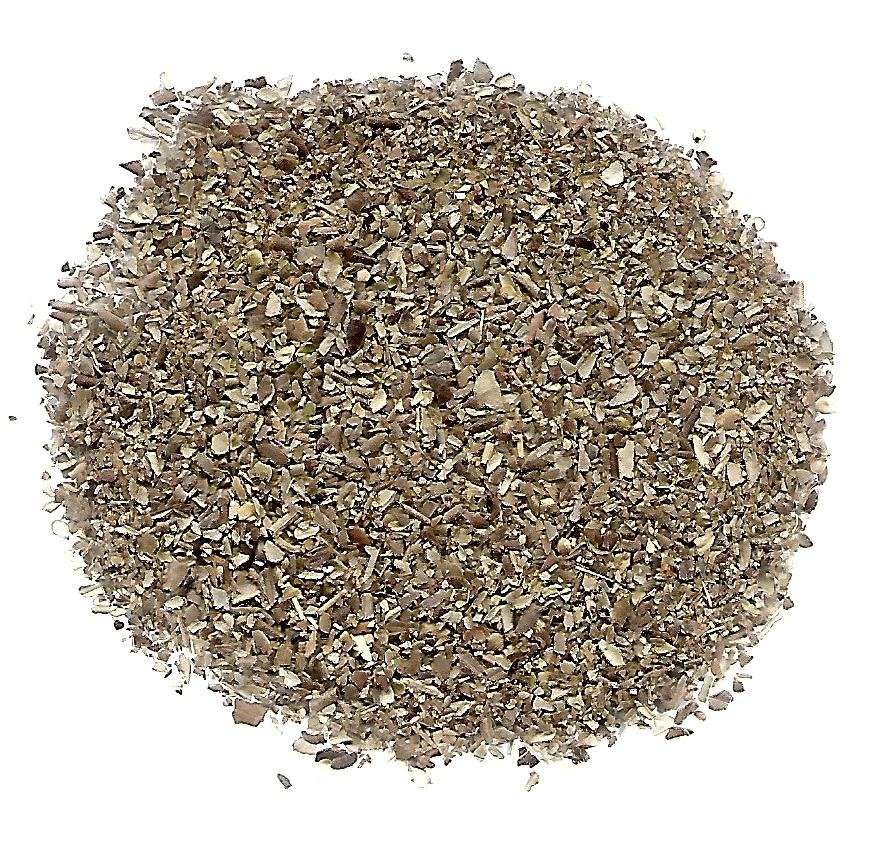12 Bold Ways Harissa Spice Will Excite Your Taste Buds
Table of Contents
- Introduction to Harissa
- Key Takeaways
- What Is Harissa: Spice or Sauce?
- Harissa Powder vs. Harissa Paste
- How to Make Harissa Paste from Harissa Powder
- Core Ingredients of Harissa
- How Spicy Is Harissa?
- Foods That Pair Well with Harissa
- Using Harissa Spice Blend in Cooking
- Cooking with Harissa: Vegetables, Meats, and More
- How to Make Homemade Harissa Spice Blend
- How to Store Harissa Powder
- Shelf Life of Harissa Powder and Paste
- Traditional Dishes That Use Harissa
- FAQs
- Conclusion
Introduction to Harissa
Harissa is a bold and aromatic North African spice blend that has become a favorite in kitchens around the world. Originating in Tunisia, this versatile seasoning can be found as a dry powder or a rich, flavorful paste, bringing smoky, earthy, and spicy notes to a wide variety of dishes. From roasted vegetables and grilled meats to soups, stews, and dips, harissa adds depth and warmth to any meal. In this guide, we’ll explore what harissa is, its key ingredients, how to use it in cooking, and tips for making and storing it at home, helping you unlock the full potential of this iconic spice.
Key Takeaways
What are the core ingredients in harissa?
Harissa is made from dried chili peppers, cumin, coriander, caraway seeds, and often garlic. Paste versions include olive oil, lemon juice, or roasted red peppers.
Is harissa a spice or sauce?
Harissa can be both: a dry spice blend for seasoning or a paste/sauce when mixed with oil, water, or other ingredients.
What’s the difference between harissa powder and harissa paste?
Harissa powder is a dry spice blend used as a rub or seasoning, while harissa paste is a thick, wet condiment made by mixing the powder with liquids and sometimes fresh ingredients like garlic.
Can I make harissa paste from harissa powder?
Yes. Mix harissa powder with olive oil, water, or lemon juice and optionally garlic or roasted red peppers to make a smooth, spreadable paste.
What foods go best with harissa?
Harissa pairs well with meats (chicken, lamb, beef), seafood, roasted or grilled vegetables, grains like couscous and rice, eggs, dips, soups, and stews.
How spicy is harissa?
Harissa ranges from mild to very hot, typically between 4,000–100,000 Scoville Heat Units depending on the chili types used, with a warm, earthy heat rather than a sharp burn.
How do you use harissa spice blend in cooking?
It can be used as a dry rub for meats, stirred into soups, stews, and sauces, tossed with roasted vegetables, mixed into grains, or made into a paste for marinades and dips.
Can harissa be used for vegetables?
Yes. Harissa enhances roasted, grilled, or sautéed vegetables, and can be mixed into stews, salads, or dips for extra heat and flavor.
How to store harissa powder?
Store in an airtight container in a cool, dark, dry place. It lasts 6–12 months at room temperature and up to 2 years in the freezer.
How do you make homemade harissa spice blend?
Toast whole seeds (cumin, coriander, caraway) and dried chilies, grind them, and mix with smoked paprika, garlic powder, salt, and optional spices. Store in an airtight container.
How long does harissa spice blend last?
Dry harissa powder lasts 6–12 months if stored properly. Harissa paste lasts 2–3 weeks in the fridge and up to a month frozen.
What are some traditional dishes that use harissa spice?
Harissa is used in shakshuka, couscous, tagines, brik, merguez sausages, lablabi, roasted meats, vegetables, and as a dip or marinade.
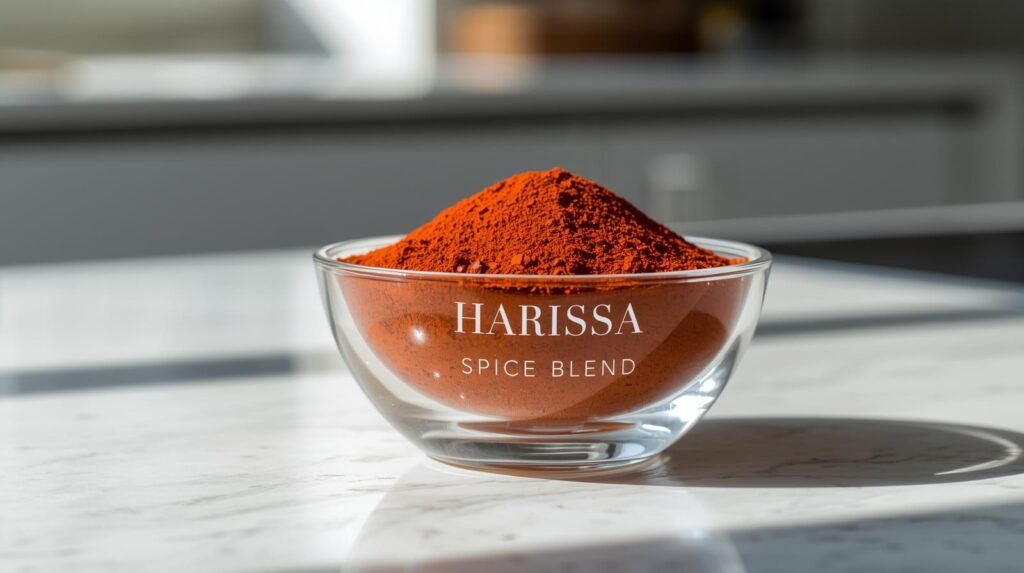
What exactly is harissa spice blend?
Harissa spice blend is a vibrant, aromatic seasoning from North Africa, with its roots in Tunisia. It is typically made from dried chili peppers such as the Tunisian Baklouti combined with garlic, cumin, coriander, and caraway seeds. Some variations include smoked paprika, dried mint, preserved lemon, or even rose petals, depending on regional traditions or personal preference.
Harissa is available both as a dry spice mix, often called harissa powder, and as a paste made by blending the spices with olive oil. This versatile blend adds heat, depth, and complexity to a wide range of dishes, from couscous, soups, and stews to grilled meats, marinades, and dips. Its bold, earthy flavor makes it a cornerstone of North African cooking.
What does harissa taste like?
Harissa has a bold and complex flavor profile that is both spicy and aromatic. Its heat comes from chili peppers, offering a warm, lingering kick rather than a sharp burn. Earthy and smoky notes are contributed by spices like cumin, coriander, caraway seeds, and sometimes smoked paprika. Garlic adds a savory aroma, while the roasted peppers provide a subtle sweetness and occasional tanginess, giving harissa its signature depth and richness.
Is Harissa a Spice or Sauce?
Harissa can be both a spice blend and a sauce/paste, depending on its form.
- Harissa Powder (Spice Blend):
A dry mix of ground chili peppers, cumin, coriander, and caraway seeds. It is versatile and can be used as a rub for meats, sprinkled over vegetables, or added to soups, stews, and marinades. - Harissa Paste (Sauce):
A thick, flavorful paste made by combining the spice blend with olive oil, roasted red peppers, garlic, and sometimes lemon juice or tomato paste. This form is used as a condiment, dip, marinade, or base for cooking, offering both heat and depth of flavor.
The key difference lies in consistency: the powder is dry and easy to store, while the paste is moist and ready to use. Harissa powder can also be turned into paste by mixing it with oil and other ingredients.
What are the typical ingredients in harissa? What is in harissa powder?
Typical Ingredients in Harissa
Harissa, whether in paste or powder form, is built on a combination of chili peppers and aromatic spices. While recipes vary by region and personal preference, the core ingredients remain consistent:
- Chili Peppers:
Dried red chilies form the base, providing heat, color, and depth. Traditional Tunisian varieties like Baklouti are common, but other types such as guajillo, New Mexico, ancho, or cayenne peppers are often used to adjust the spice level and flavor. - Aromatic Spices:
Cumin, coriander, and caraway seeds are essential, giving harissa its earthy, warm, and slightly nutty undertones. These seeds are often lightly toasted before grinding to enhance their aroma. - Other Ingredients (for Paste):
To make harissa paste, the dried chilies and spices are combined with garlic, salt, and olive oil. Some variations also include roasted red peppers, tomato paste, lemon juice, or preserved lemon for additional depth and complexity. - Optional Flavor Enhancers:
Smoked paprika adds smokiness, while dried herbs like mint or oregano, rose petals, or sumac may be included in certain regional recipes to create unique flavor profiles.
Harissa Powder (Dry Spice Blend)
Harissa powder is the dry version of the spice mix used to make harissa paste. It contains the same core ingredients:
- Ground dried chili peppers – the primary source of heat and color.
- Ground cumin, coriander, and caraway seeds – for earthy and aromatic notes.
- Additional seasonings – garlic powder, salt, and sometimes smoked paprika or cayenne to round out the flavor.
The key difference between harissa powder and paste is the absence of liquid ingredients (like olive oil, roasted peppers, or tomato) in the powder, making it a versatile dry seasoning that can be rehydrated or used directly in cooking.
What are the core ingredients in harissa?
Core Ingredients in Harissa
The fundamental ingredients in harissa, whether in powder or paste form, are:
- Dried Red Chili Peppers: The base of the blend, providing heat and color. Common varieties include Baklouti, cayenne, or guajillo peppers.
- Cumin: Adds earthy warmth and depth.
- Coriander: Contributes citrusy and slightly floral notes.
- Caraway Seeds: Imparts a subtle, musky undertone.
- Garlic: Adds pungency and aromatic complexity (primarily in the paste).
- Olive Oil: Combines the ingredients into a smooth, thick paste (paste only).
- Salt: Enhances and balances the flavors.
Optional additions in some recipes include roasted red peppers, tomato paste, lemon juice, smoked paprika, or dried herbs to enrich flavor and aroma.
Harissa Powder is essentially the dry version of the spice blend and contains dried chili powder, cumin, coriander, caraway, garlic powder, and sometimes smoked paprika.
Spiciness of Harissa
Harissa’s heat varies depending on the chili peppers used:
- Traditional Tunisian Harissa: Often made with Baklouti peppers, offering mild to medium heat (approximately 4,000–5,000 Scoville Heat Units), similar to a jalapeño.
- Commercial or Homemade Variations: Can include hotter chilies like cayenne or serrano, allowing the spice level to range from moderate to very hot.
- Overall Flavor Sensation: The heat is generally warm and lingering rather than sharp, balanced by the earthy and smoky flavors of cumin, coriander, and caraway.
You May Also Like These Posts
8 Flavor-Boosting Tips for Mastering Chermoula Spice Blend at Home
13 Irresistible Ways to Use Berbere Spice and Transform Everyday Cooking
9 Surprising Differences Between Greek and Mexican Oregano That Make Your Dishes Explode with Flavor
Power of Za’atar Spice Blend: 5 Tips for Authentic Middle Eastern Home Flavor
The Ultimate Guide to Garam Masala: How to Use, Make, and Benefit from This Indian Spice Blend
What’s the difference between harissa powder and harissa paste?
Harissa Powder Vs Harissa Paste
Harissa Powder:
A dry spice blend made from ground dried chili peppers, cumin, coriander, caraway seeds, and often garlic powder, smoked paprika, and salt. It has a long shelf life and can be used as a seasoning, dry rub for meats, or added directly to soups, stews, vegetables, and marinades.
Harissa Paste:
A wet, thick condiment made by combining harissa powder (or fresh/dried chilies and spices) with olive oil, water, roasted peppers, garlic, lemon juice, or tomato paste. It is used as a spread, dip, marinade, or flavor base for cooking and is the most common form sold in stores.
Key Difference:
The main difference is consistency and form. Harissa powder is dry and concentrated, while harissa paste contains moisture and has a richer, saucier texture. Harissa paste can be made at home by mixing harissa powder with oil and other fresh ingredients.
What foods go best with harissa?
Harissa’s bold, earthy, and spicy flavor makes it a versatile ingredient that complements a wide variety of dishes. It pairs particularly well with foods that can stand up to its heat or provide a cooling contrast.
- Meats and Seafood
- Chicken and Lamb: Ideal as a marinade, rub, or mixed into meatballs for roasting or grilling.
- Beef: Adds depth and spice when used as a rub or in stews.
- Fish and Seafood: Enhances oily fish like salmon, cod, or sardines, and adds a fiery kick to grilled shrimp or prawns.
- Vegetables
- Root Vegetables: Carrots, sweet potatoes, and squash balance harissa’s heat with their natural sweetness; toss with harissa before roasting.
- Cruciferous Vegetables: Cauliflower, broccoli, and Brussels sprouts develop a rich flavor when roasted with harissa.
- Grains and Legumes
- Couscous, rice, quinoa, freekeh, or lentils are transformed with a dollop of harissa stirred in, creating a flavorful side or base for a meal.
- Eggs
- Harissa adds spice to scrambled eggs, fried eggs, or shakshuka (eggs poached in tomato sauce).
- Sauces, Dips, and Condiments
- Yogurt or Aioli: Mix with Greek yogurt, labneh, or mayonnaise for a cooling, spicy sauce.
- Hummus: Swirl into hummus for added heat and complexity.
- Marinades and Dressings: Combine with olive oil and lemon juice to make vibrant salad dressings or marinades.
- Breads and Other Dishes
- Spread on flatbreads or pita for dipping, or use as a condiment alongside roasted vegetables, halloumi, or bean dishes.
Harissa’s versatility makes it perfect for both bold, spicy applications and dishes where a touch of heat enhances the overall flavor.
How Spicy Is Harissa?
Harissa’s heat can range from mild to very hot, depending on the type and amount of chili peppers used.
- Traditional Tunisian Harissa: Often made with Baklouti peppers, which score around 4,000–5,000 Scoville Heat Units (similar to a jalapeño), offering a moderate, warm heat.
- Commercial and Homemade Varieties: May include hotter chilies like cayenne, guajillo, or New Mexico peppers, producing a spicier blend that can reach up to 100,000 Scoville Heat Units.
- Flavor Balance: The spiciness is usually warm and complex rather than sharp or overwhelming, balanced by earthy, smoky notes from cumin, coriander, and caraway.
If a dish with harissa feels too spicy, the heat can be tempered with dairy (yogurt, sour cream), sweet ingredients, roasted peppers, or a splash of lemon juice.
How do you use harissa spice blend in cooking?
How to Use Harissa Spice Blend in Cooking
Harissa spice blend (harissa powder) is a versatile seasoning that adds earthy, smoky, and spicy flavors to a wide variety of dishes. Unlike the paste, the dry blend is ideal for applications where you don’t want to add moisture, but it can also be turned into a paste when needed.
- As a Dry Rub:
Sprinkle harissa powder on meats like chicken, lamb, or beef before grilling or roasting to create a flavorful crust. It also works well on fish and seafood. - Roasting Vegetables:
Toss root vegetables (carrots, sweet potatoes, squash) or cruciferous vegetables (cauliflower, broccoli) with olive oil and harissa powder before roasting. The heat intensifies the spice and creates a caramelized coating. - In Soups, Stews, and Sauces:
Add a teaspoon or two of harissa powder to soups, stews, tagines, or tomato-based sauces while simmering to impart warmth and depth. - Seasoning Grains:
Stir harissa into cooked grains like couscous, rice, quinoa, or freekeh for a quick flavor boost. - Making a Paste:
Mix the powder with olive oil, water, or roasted red peppers to create a thick harissa paste. Use this as a marinade, spread, or sauce for meats, vegetables, or sandwiches. - In Dips and Condiments:
Blend harissa powder into yogurt, labneh, sour cream, or mayonnaise to make a spicy dip or spread for sandwiches, wraps, and vegetables. - Enhancing Eggs:
Sprinkle into scrambled eggs, fried eggs, or shakshuka for a fiery, aromatic twist. - Creative Uses:
Add to burgers, pasta sauces, salad dressings, or mix with olive oil for drizzling over roasted vegetables for an extra kick.
Harissa spice blend is highly adaptable, making it an excellent tool for both everyday cooking and creative culinary experiments.
Can Harissa Be Used for Vegetables?
Yes, harissa spice blend is excellent for vegetables. Its bold, smoky, and spicy flavor pairs beautifully with the natural sweetness and earthiness of many vegetables, making it a staple in North African-inspired vegetarian dishes.
Ways to Use Harissa with Vegetables:
- Roasting:
Toss chopped vegetables—such as carrots, sweet potatoes, cauliflower, Brussels sprouts, zucchini, or squash—with harissa paste or powder mixed with olive oil. Roast on a sheet pan until caramelized. The heat enhances the spices and develops rich, deep flavors. - Soups and Stews:
Add a spoonful of harissa to vegetable-based soups or stews to introduce warmth, depth, and a spicy kick. It works well with chickpeas, tomatoes, eggplant, and other hearty vegetables. - Condiment or Dip:
Mix harissa paste with yogurt, hummus, or mayonnaise to create a creamy, spicy dip for raw or roasted vegetables. - Sautéing:
Use harissa as a flavor base for sautéed vegetables. Cooking onions, garlic, or other vegetables with a bit of harissa at the start infuses the entire dish with its aromatic heat. - Grilled or Stirred Into Bowls:
Toss grilled vegetables or vegetable bowls with harissa for an added layer of spice and complexity, enhancing salads or side dishes.
Harissa is versatile and can elevate almost any vegetable dish, whether roasted, sautéed, stewed, or served as a condiment.
How to Store Harissa Powder
To maintain the flavor and potency of harissa powder, proper storage is essential:
- Use an Airtight Container:
Store harissa powder in a tightly sealed container, such as a glass jar or spice tin, to protect it from air, moisture, and contamination. - Keep It Cool and Dark:
Place the container in a cool, dry, and dark location, like a pantry or spice cabinet. Avoid storing near heat sources or in direct sunlight, as heat and light can degrade the spices and reduce their aroma. - Shelf Life:
Harissa powder typically retains its best flavor for 6–12 months. Over time, the aroma and intensity of the spices may fade. Check for freshness by smelling the powder; if the fragrance is weak, the flavor has likely diminished.
Proper storage ensures that harissa powder stays flavorful, aromatic, and ready to enhance your dishes whenever you need it.
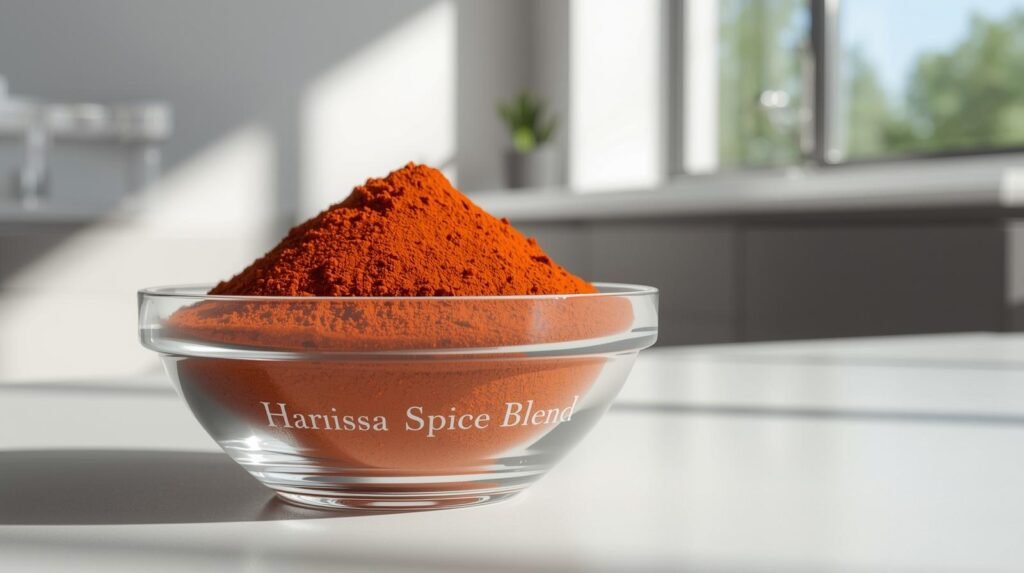
How do you make homemade harissa spice blend?
How to Make Homemade Harissa Spice Blend
Harissa spice blend, also known as harissa powder, is a versatile North African seasoning originating from Tunisia. It delivers bold, smoky, earthy, and spicy flavors and can be used as a dry seasoning or transformed into a paste for marinades, sauces, or dips. Making it at home allows you to control the heat and freshness, giving you a superior flavor compared to most store-bought blends.
Ingredients (for 1/2–3/4 cup)
Core Ingredients:
- 6–10 dried red chilies (e.g., guajillo, ancho, chiles de árbol, or Baklouti)
- 1–2 tablespoons cumin seeds
- 1–2 tablespoons coriander seeds
- 1–2 teaspoons caraway seeds
- 1–2 teaspoons smoked paprika (optional, for smokiness)
- 1–2 teaspoons garlic powder
- 1 teaspoon salt (optional)
Optional Add-ins for Variations:
- ½–1 teaspoon cayenne pepper (extra heat)
- ½–1 teaspoon dried mint, oregano, or parsley (herbal freshness)
- Pinch of crushed dried rose petals (floral note)
- ½ teaspoon black peppercorns (sharpness)
Equipment Needed:
- Dry skillet or frying pan
- Spice grinder, coffee grinder (dedicated to spices), or mortar and pestle
- Airtight container for storage
- Gloves (recommended for handling chilies)
Step-by-Step Procedure
1. Prepare the Chilies
- Remove stems from dried chilies.
- Slice open and remove seeds for milder heat, or leave seeds for a spicier blend.
- Roughly chop larger chilies to make grinding easier.
2. Toast the Chilies
- Heat a dry skillet over medium-low heat.
- Add chilies and toast for 4–6 minutes, stirring frequently until fragrant and slightly darkened.
- Remove and cool completely (5–10 minutes).
Optional oven method: Preheat to 350°F (175°C) and toast chilies on a sheet pan for 5 minutes.
3. Toast the Seeds
- In the same skillet, add cumin, coriander, caraway seeds, and optional peppercorns.
- Toast for 1–3 minutes, stirring constantly until fragrant and lightly golden.
- Remove and cool for 2–5 minutes.
4. Grind the Ingredients
- Grind the cooled chilies in a spice grinder or mortar and pestle until coarse.
- Add toasted seeds and grind again until the mixture forms a fine, uniform powder.
- Pulse or grind in small batches if needed.
5. Combine Remaining Spices
- Transfer ground mixture to a bowl.
- Add smoked paprika, garlic powder, salt, and any optional ingredients.
- Mix thoroughly until uniform. Adjust seasonings to taste.
6. Store the Harissa Powder
- Transfer the blend to an airtight container.
- Store in a cool, dark, dry place.
- Shelf life: 6–12 months at room temperature, or up to 2 years in the freezer. Check aroma before use; weak scent means flavor has faded.
Tips for Success
- Ventilation: Toast chilies in a well-ventilated area; fumes can irritate eyes and throat.
- Avoid Burning: Stir constantly during toasting; burnt spices taste bitter.
- Batch Grinding: Work in small batches for even texture.
- Adjust Heat: Start mild and add spicier chilies or cayenne gradually.
- Making Paste: Mix 2–3 tablespoons of harissa powder with olive oil, lemon juice, or roasted red peppers to form a paste. Let sit 20 minutes for flavors to meld.
This homemade harissa spice blend can elevate roasted vegetables, meats, grains, soups, stews, and dips. It’s customizable, fresh, and far more aromatic than most store-bought alternatives.
Can I make harissa paste from harissa powder
Making Harissa Paste from Harissa Powder
Yes, harissa paste can be made easily from harissa powder, giving you a fresh, ready-to-use condiment.
Basic Ingredients (per 2–3 tbsp powder):
- 2–3 tablespoons harissa powder
- 1–2 tablespoons extra virgin olive oil
- 1–2 teaspoons water or lemon juice
- Optional: 1 minced garlic clove or ¼ teaspoon garlic powder
Method:
- Rehydrate the spices: In a small bowl, mix harissa powder with water or lemon juice. The liquid helps bring out the full flavor of the chili and spices.
- Add oil: Stir in olive oil until you get a smooth, spreadable paste. Adjust the amount of oil for desired consistency.
- Enhance flavor (optional):
- Garlic: minced or powdered
- Lemon juice or vinegar: adds brightness
- Tomato paste or roasted red peppers: adds richness and smoothness
- Smoked paprika: enhances smokiness if needed
- Rest & store: Let the paste sit 15–20 minutes to meld the flavors. Transfer to an airtight container and refrigerate for up to 2 weeks.
Tips:
- Adjust liquid gradually to control thickness.
- Use fresh ingredients for more vibrant flavor.
- The paste can be used in marinades, dips, spreads, soups, stews, and roasted vegetables.
How long does harissa spice blend last?
Shelf Life of Harissa Spice Blend and Paste
- Harissa Spice Blend (Powder): Lasts 6–12 months when stored in an airtight container in a cool, dry, dark place. For maximum freshness, it can be kept in the freezer for up to 2 years. Over time, the aroma and flavor fade, so check potency before use.
- Homemade Harissa Paste: Lasts about 2–3 weeks in the fridge when covered with a thin layer of olive oil in a sealed jar. It can also be frozen for up to 1 month.
Storage Tips:
- Use airtight containers to prevent exposure to air and moisture.
- Keep away from heat, sunlight, and humidity.
- For the paste, ensure a layer of oil covers the surface to preserve freshness.
This ensures your harissa stays flavorful and aromatic for as long as possible.
What are some traditional dishes that use harissa spice?
Here’s a concise list of traditional dishes that use harissa:
North African Staples:
- Shakshuka: Eggs poached in a spicy tomato and pepper sauce.
- Tunisian Couscous: Served with vegetables, chicken, or lamb, often mixed or topped with harissa.
- Tunisian Tagines: Slow-cooked stews with chicken, lamb, or vegetables, flavored with harissa.
- Lablabi: Tunisian chickpea soup spiced with harissa.
- Harira: Moroccan lentil and chickpea soup, sometimes enriched with harissa.
Meat and Seafood:
- Harissa Chicken: Roasted or grilled with harissa marinade.
- Lamb Dishes: Meatballs, kebabs, or stuffed vegetables with harissa seasoning.
- Merguez Sausages: Spicy North African lamb or beef sausages served with or seasoned with harissa.
- Charmoula Marinade: Fish or meat marinated with harissa and spices.
- Harissa Pasta with Prawns or Seafood: A fusion-style dish using harissa for heat and flavor.
Vegetables and Pastries:
- Harissa-Roasted Vegetables: Cauliflower, carrots, sweet potatoes, or Brussels sprouts tossed in harissa.
- Brik: Tunisian fried pastry filled with egg, tuna, or meat, often served with harissa.
- Harissa-Stuffed Vegetables: Courgettes, peppers, or eggplants filled with spiced mixtures.
Condiments & Sides:
- Harissa in Dips: Mixed into yogurt, hummus, or labneh.
- Bread & Sandwiches: Served as a spicy accompaniment to flatbreads or shawarma.
Harissa is a versatile ingredient in North African cuisine, adding heat, depth, and earthy spice to both main dishes and condiments.
FAQs: Harissa Spice and Paste
What is harissa?
Harissa is a North African chili-based condiment. It comes in two forms: a dry spice blend of chilies and spices, and a paste/sauce made by mixing the spices with olive oil, water, or other liquids.
What are the core ingredients in harissa?
The essential ingredients are dried red chilies, cumin, coriander, caraway seeds, and garlic. Paste versions may also include olive oil, lemon juice, roasted peppers, or smoked paprika.
What’s the difference between harissa powder and harissa paste?
- Harissa Powder: A dry spice blend used as a rub, seasoning, or to make paste.
- Harissa Paste: A wet, spreadable condiment made by combining the powder with liquids like olive oil, water, or lemon juice, often with fresh garlic or roasted peppers.
Can I make harissa paste from harissa powder?
Yes. Mix harissa powder with olive oil and a little water or lemon juice. Optionally, add minced garlic. Stir to a smooth paste and let sit 15–20 minutes for flavors to meld.
How spicy is harissa?
Harissa ranges from mild to very hot, typically 4,000–100,000 Scoville Heat Units, depending on the chili types. Traditional Tunisian harissa is usually medium heat, similar to a jalapeño.
How do I use harissa in cooking?
Use harissa to:
- Rub or marinate meats and seafood
- Toss with roasted or grilled vegetables
- Stir into soups, stews, or sauces
- Mix with yogurt, hummus, or mayonnaise for dips
- Season grains like couscous, rice, or quinoa
Can harissa be used for vegetables?
Yes. Harissa works well with roasted, grilled, or sautéed vegetables, adding heat, smokiness, and depth of flavor.
How do I store harissa powder and paste?
- Powder: Airtight container, cool, dry, dark place. Lasts 6–12 months.
- Paste: Airtight jar in the fridge. Lasts 2–3 weeks, or freeze for up to a month.
How do I make homemade harissa spice blend?
Toast cumin, coriander, and caraway seeds. Grind with dried chilies, garlic powder, smoked paprika, and salt. Store in an airtight container. Adjust chili types for heat preference. Can be turned into paste with olive oil and lemon juice.
What foods pair best with harissa?
Harissa complements chicken, lamb, beef, seafood, roasted vegetables, couscous, rice, soups, stews, eggs, dips, and bread. Its bold flavor is versatile across many dishes.
What traditional dishes use harissa?
Classic dishes include:
- Shakshuka – eggs in a spicy tomato sauce
- Couscous – meat or vegetable-based
- Tunisian Tagines – slow-cooked stews
- Lablabi – chickpea soup
- Brik – Tunisian pastry
- Merguez sausages – spiced lamb/beef sausages
Conclusion
Harissa is more than just a chili paste—it’s a versatile North African spice blend that adds depth, heat, and smoky flavor to a wide range of dishes. Whether you choose harissa powder for a dry seasoning or harissa paste for a rich, spreadable condiment, incorporating it into your cooking can elevate meats, vegetables, grains, soups, and dips. By understanding how to use, store, and even make your own homemade harissa, you can bring the authentic taste of Tunisia into your kitchen. Experiment with harissa to create bold, flavorful meals that satisfy both spice lovers and those looking to explore new culinary horizons.
